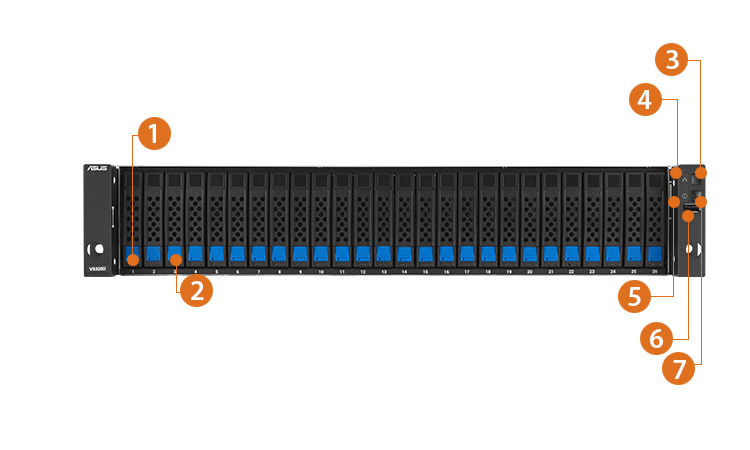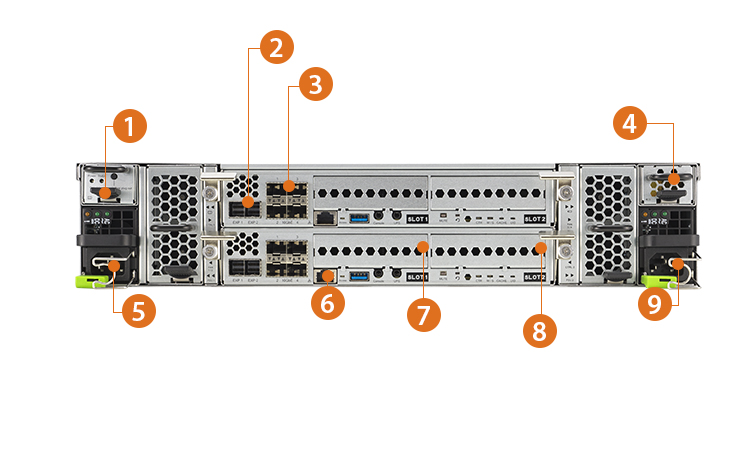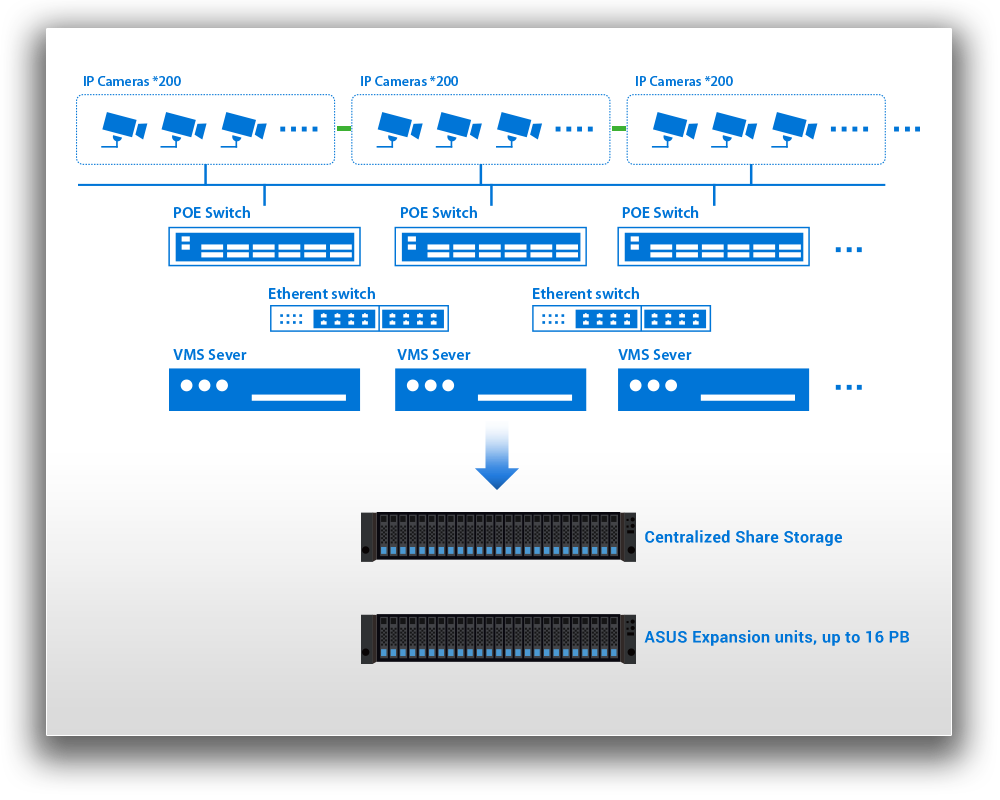CPU
CPU Intel® Xeon®
64-bit 4-core
Expertly engineered for large surveillance, multimedia and production industries, as well as diverse small-to-medium business demands, ASUS VS320D-RS26 is a robust and adaptable storage solution that employs a dual active-active architecture to maximize the data safety – minimizing the risk of information loss during power outages and accelerating workload completion like never before.
CPU Intel® Xeon®
64-bit 4-core
DDR4 ECC DIMM,
up to 512GB
8 onboard 10GbE
SFP for iSCSI
Up to 546 drive bays


1Disk Drive Status LED
2Disk Drive Power LED
3Enclosure Power Button/LED
4Enclosure Access LED
5Enclosure Status LED
6USB Port
7UID (Unique Identifier) Button/ LED


1Flash Module Slot
22x 12Gb SAS Expansion Ports
34x 10GbE iSCSI SFP+ Ports
4Flash Module Slot
5PSU 1
6Management Port
7Optional LAN Slot 1
8Optional LAN Slot 2
9PSU 2
VS320D-RS26 is a powerful hybrid server storage crafted with tool-less drive bays to simplify both maintenance and upgrades, and with an adaptable design that permits access from both the front and rear. It can scale up to 546 drive bays, accommodating up to 20 ASUS expansion units or four third-party JBODs. With exceptional performance reaching 12.8GB/s and 1.3M IOPS, VS320D-RS26 offers remarkable scalability up to 16.7 PB of storage when fully expanded. Additionally, its C2F module design provides advanced memory and data protection, offering security against potential threats. Together, these attributes establish a dependable and effective server solution, well-suited for contemporary data environments.

VS320D-RS26 seamlessly enables fast data transmission, thanks to its utilization of a multi-LAN design. Each controller with built-in four-port 10GbE (SFP+) and maximum 12 LANs allows direct connection to multiple LANs without switches.
Power consumption
Latency
SFP+
0.7 watts per end
0.3 microseconds

Storage is increasingly crucial for HPC applications, handling extensive data processing – and ASUS Storage Manager is here to help. Its components work harmoniously to improve maintenance efficiency, monitor storage performance and enhance system stability. With intuitive features, IT admins and even everyday users are empowered to easily monitor disk health, manage clusters of servers, set alerts, track power-on time, monitor temperature and more.

Creating and editing tasks heavily depend on storage access speed and responsiveness. The demand on servers necessitates exceptional speed and reliability with redundancies. With support for SAS, NL-SAS, SED HDD and expandable connectivity, ASUS VS320D-RS26 storage solutions offer exceptional reliability to manage demanding workflows.

The surveillance system requires robust storage to handle large video volumes and maintain a steady feed. The VS320D-RS26 offers up to 16 petabytes of storage, scaling seamlessly and easily as needed. ASUS Software Utility simplifies centralizing and managing surveillance setups, ensuring remote monitoring of server systems runs smoothly.
